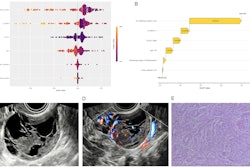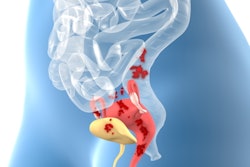Deep infiltrating endometriosis on transvaginal ultrasound (TVUS) decreases the chance for a live birth in women undergoing their first fertility treatment, according to Swedish research published January 19 in Fertility and Sterility.
A team led by Sara Alson, MD, from Lund University in Malmö found that expectant mothers undergoing in vitro fertilization (IVF) or intracytoplasmic sperm injection (ICSI) treatment and who have endometriosis had a nearly 10% lower chance of a live birth compared with those without the disease.
“Our results contradict those that suggest that IVF treatment can completely counter the negative effects of endometriosis seen on fertilization in vivo,” Alson and co-authors wrote.
Endometriosis affects about 10-15% of women of reproductive age and is tied to chronic inflammation and subfertility. However, the cause of subfertility by endometriosis is not well understood.
IVF and ICSI are assisted reproductive treatments explored as potential ways to counteract the subfertility effects of endometriosis. There is conflicting evidence, though, as to their respective effectiveness on liver birth rates. TVUS meanwhile is a first-line imaging approach to diagnose endometriomas and deep infiltrating endometriosis.
The Alson team evaluated the cumulative live birth rate after the first IVF or ICSI treatment in women with or without deep infiltrating endometriosis diagnosed by TVUS. It used group definitions from the International Deep Endometriosis Analysis.
In their prospective study, the researchers included data from 1,040 subfertile women ages 25 to 39. These women underwent their first IVF or ICSI treatment between 2019 and 2022. Of the total, 234 women were diagnosed with deep infiltrating endometriosis through TVUS before fertility treatment began.
The cumulative live birth rate after the first fertility treatment regimen in the study population was 41%.
The team reported that women diagnosed with deep infiltrating endometriosis had a cumulative live birth rate of 33.3% (n = 78/234). Women without the disease had a rate of 43.2% (n = 348/806, p = 0.007).
Additionally, the cumulative live birth rate for women with deep infiltrating endometriosis had a crude relative risk of 0.77. After adjustments were made for patient characteristics such as age, body mass index (BMI), s-anti Müllerian hormone, stimulation protocol, and day for embryo transfer, the adjusted relative risk was 0.63.
Finally, the team reported no significant difference in the number of retrieved mature oocytes, fertilization rate, or good-quality embryos between women with and without endometriosis.
The study authors suggested multiple reasons why their results contradict previous studies in this area. For example, prior studies were retrospective and used different methods in diagnosing endometriosis.
The authors also called for future research to find out whether women with deep infiltrating endometriosis could achieve the same cumulative live birth rate as women without the disease after repeated cycles of fertility treatment.
“Future studies will also reveal whether a concurrent presence of adenomyosis diagnosed with TVUS affects the IVF/ICSI outcome,” they added.
The full study can be found here.



















